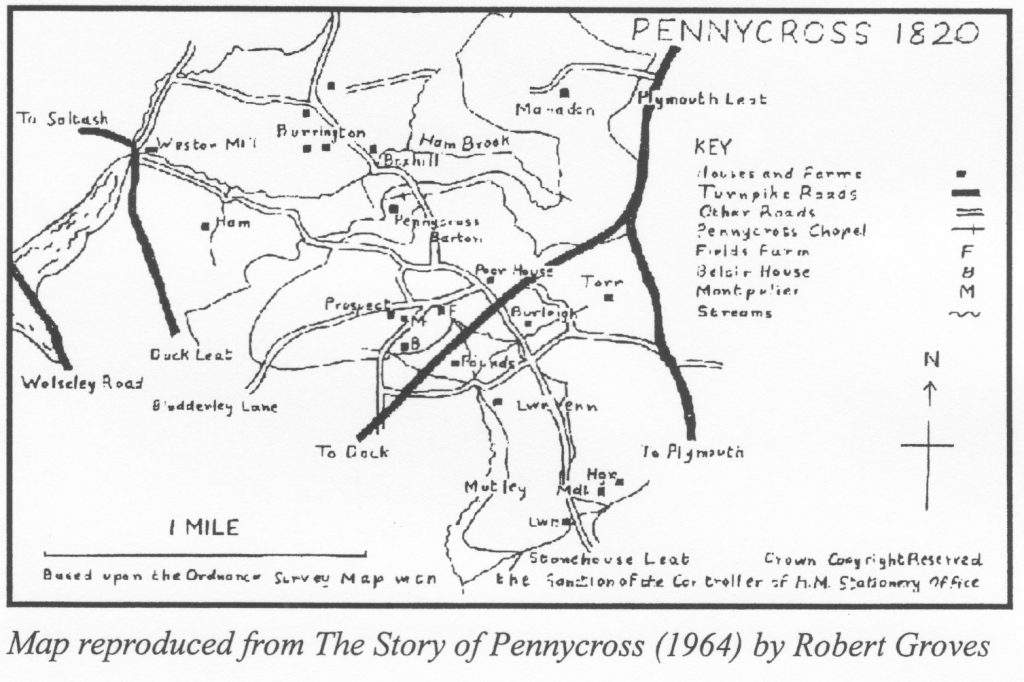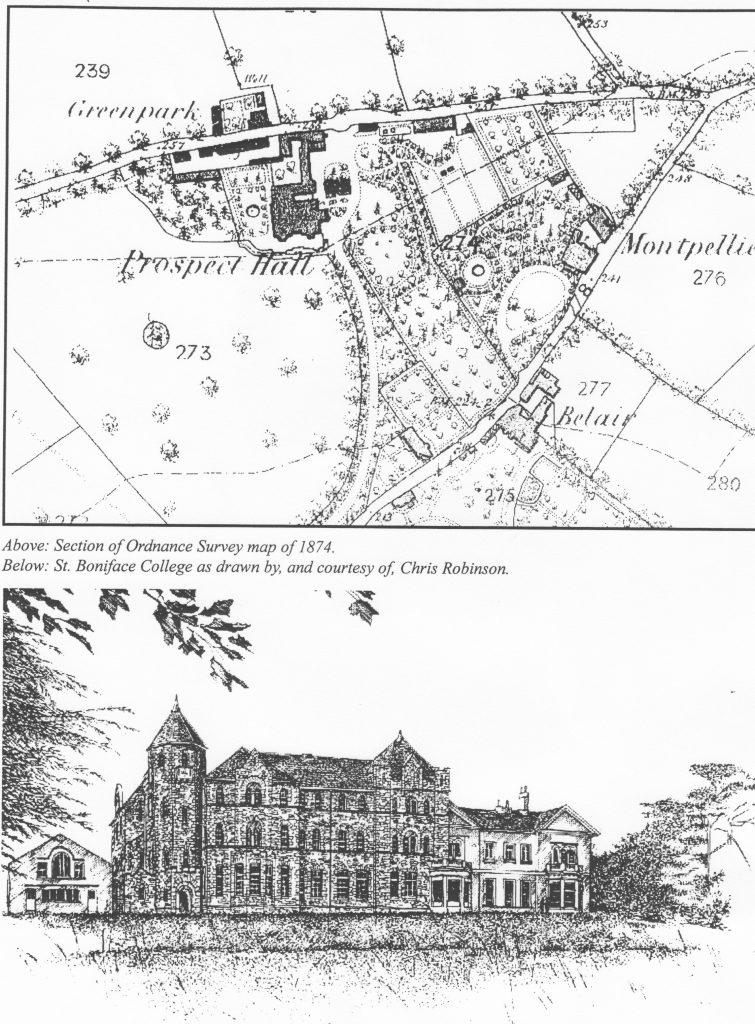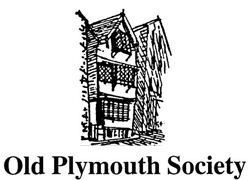by Len Stephens
Published May 2012
For some time I have been researching the historic sites and buildings that bordered on what is now Central Park. One place that has mystified me is Prospect, which is described in an 1812 Directory as the residence of Captain Hotchkys, RN – a good house with gardens about 2 miles from town. In the Brindley Directory of 1830 it is referred to as a Georgian country house in the tything of Pennycross, the residence of J. Downes, Esq.
However, before delving into the history of Prospect it is helpful to know a little about the origins of Pennycross. Robert Groves in The Story of Pennycross writes that its name may go back to Celtic times, Pen-y-cross means “Hill of the Cross”, but on the other hand it might have been named after the patron saint of the Church, Pancras, slurred by the South Devon burr.
It was originally a group of Celtic farms that formed the tything of Weston, the name of the most important manor within the Hundred of Roborough. After the Norman Conquest it was listed in the Domesday Book as part of the manor of Weston and Manadon. The 16th century map by Robert Spry shows the Chapel, “Pennycrosse” and only three houses, the Barton, close to the Chapel, Ham and Manadon. The land was under the manor ownership of Manadon and Weston Peverell that was held by the Harris family until 1737 when it passed to Robert Hewer fora short period and then to Humphrey Hall.
We know that the 18th century wealth led to the building of country mansions by the gentry and merchants of Plymouth and Dock (Devonport) in the countryside particularly at Pennycross (Weston Peverell). The Gardner survey map of 1784 shows some of these houses including Prospect. Its precise position is shown on an 1820 Ordnance Survey map of Pennycross; it was south of the Barton, north of Belair House, and east of Montpelier and Fields Farm.
By 1811 Prospect was one of 34 inhabited houses in the Tything of Weston Peverell which had 36 families (102 males and 137 females). At this time Weston Peverell, or Pennycross, was in the Chapelry of St. Andrew, but with its growth in the 19th century it became an independent parish. In the London Gazette of 8th February 1898, there appeared the announcement of the creation of the Parish of St. Pancras, Pennycross, comprising all the Tything of Weston Peverell except an area in the west that passed to the Parish of St. Mark, Ford.
Whilst I have not been able to trace the exact date when Prospect was built and by whom, it would appear to have been built in the early to mid 18th century probably for a relative of the Hall family. It was one of the largest country houses in the Pennycross tithing with a commanding view of the countryside and across the fields (now Central Park) to the town and sea. It was linked to Pennycross Barton by an ancient church path, later to become a road. This passed by the site of the ancient beacon and went through a wicket gate opening in the grounds of Prospect, commonly referred to as “the Hole in the Wall”. It then followed a path down, what is now Lyndhurst Road, to the main route through the current Central Park to Pennycomequick. Prospect was therefore an important historic site in the history of Plymouth, yet it no longer features on our maps.
References to Prospect have been gleaned from well-known sources. The late R.N. Worth in some notes on Pennycross mentions the old Poor House, a cottage near Prospect in 1765 and refers to Humphrey Hall, an overseer of the Poor whose Accounts books list the property owners who paid Poor Rates from 1764/5 onwards. The name of C.H. Hotchkys, Esq., of Prospect appears in the records around 1800 and his family continued to pay Poor Rates until 1829. Samuel Rowe in 1821 referred to the elegant villa Prospect being occupied by one of the French emigres who made their home in the Plymouth area after the French Revolution but he gave no names. Another French connection is given by G.W. Copeland who commenting on the architectural features of Prospect wrote of its being influenced by French Huguenots (I believe Humphrey Hall’s family tree showed a Huguenot relation). T. Carrington in his 1833 Topograph and Pedestrian Companion describes a most favourable walk to Pennycross via the lawns of the stately mansion of Prospect, then occupied by Mrs. Downes. A search in the Plymouth & West Devon Record Office has not revealed the names of the occupants of Prospect in the 18th century other than Charles Henry Hotchkys, Esq., towards the end of the century. Besides being shown as paying Poor Rates he was listed as a property owner of stock in the 1803 Return for the tithing of Weston Peverell on account of the threatened invasion of England by Bonaparte.
The Hotchkys family
I was unable to trace any record of the Hotchkys family in the Parish records of St. Pancras and none of the family appears to have been buried in the Church cemetery, so perhaps their religion was not Church of England. I thought they might have been Huguenot descendants but this is not borne out by checking the records of Plymouth’s Huguenots. However, I found out that Charles Henry Hotchkys had four sons who had distinguished careers in the Service of the Crown. This information has been obtained from O’Byrne’s Naval Biographical Dictionary. The eldest, Adam, served in the Medical Services of the East India Company and was killed in India in 1780. The second, Alexander, was a Lieutenant of Marines who died in the Stirling Castle off the coast of America in the wars of 1780. The third, David, lost his left leg whilst serving as a Lieutenant RN on the Preston in action off DoggerBank in1781. The fourth was John who is shown as Captain Hotchkys RN the occupant of Prospect in the 18th century directory, although he never held the rank of Captain RN but did captain one or two ships. O’Byrne lists him as Lieutenant John Hotchkys RN (Retired Commander RN 1830), born the 28th August 1766 and entered the Navy in October 1778.
He served as a Midshipman on several ships becoming Master’s Mate on the Gibraltar in 1793. The zenith of his career was with the British fleet under Admiral Lord Howe who defeated the French off Ushant in 1794 in the battle known as “the Glorious First of June”. For his services he was appointed acting Master of the Northumberland, one of the prizes taken by the British. He later went to the Mediterranean where he was promoted to Lieutenant RN on the 17th June 1795. His ship the Ca Ira caught fire in San Fiorenza Bay in 1796. He subsequently served from the 26th September 1796 until May 1797 on the Monmouth under Captain, the Earl of Northesk in the North Sea. He was a senior Lieutenant (there was no rank then of Lt. Cdr.) when he was invalided from badness of sight (probably due to an injury) and he did not go afloat again. He became a retired Commander RN on the 26th November 1830.
On the domestic side he was married on the 9th November 1800 to Mary, daughter of R. Pearce, Esq. of County Westmeath, who died in 1830 and they appear not to have had any children. His second wife in 1832 bore him a son but there is no record of the family after this, except that John Hotchkys had moved from Prospect to a country residence in the South Hams area.
He would not have been short of naval company whilst residing at Prospect since he had distinguished naval neighbours. At Montpelier, close by, was Vice-Admiral Sir Edward Pellew before his son Captain Pownell Pellew RN took over the residence. Whilst at Belair there was Captain Thomas Elphinstone RN whose house was used to hold a Council of War in 1815 when the fate of Napoleon Bonaparte, exile to St. Helena, was announced.
How Prospect became Beaconfield, then St. Boniface College.
By 1830 Prospect had been taken over by J. Downes Esq. who appears to have died by 1833 as Mrs. Downes is shown as the owner in the Brindley Directory. In White’s Directory of 1850 the owner was James Bryant Esq followed by Taylor, Pearce Gilbert Edward Esq. shown in Kelly’s Directory of 1873. It was called Prospect Hall on an 1874 Ordnance Survey Map. It was to have another Naval owner in 1883, Lord Francis Horace Pierrepont Cecil, J.P., Lieutenant RN who renamed the house Beaconfield, named after the fire beacon in Elizabethan times at Pennycrosse Beakin (hence Beacon Park).
In 1884 Beaconfield was sold for £10,000 to the Basilian Fathers who had taken over the Catholic School in Melbourne Street, off North Road (West). In September the College of Immaculate Conception opened here as a boarding school and extensions were added to the original Prospect house. In White’s 1890 directory the Very Reverend E.A. Durant BA was shown as the resident of Beaconfield House. The College closed down in 1900 but was to re-open in 1907 when the Ursuline Sisters exiled from Brittany took over the house under their Superior Mere Decouvrant (Mother Discovery) with 61 nuns and 85 school boarders as occupants. The house, therefore, had to expand and in 1911 a grand limestone building was added to it. The school was sold in 1931 to the Sisters of Nazareth who in turn passed it over to Bishop Barrett who installed the Irish Christian Brothers to run a school for the education of Catholic boys taking over the pupils at St. Boniface College in Wyndham Square. So Beaconfield House after more alterations and extensions became St. Boniface College.
It officially opened on the 7th September 1931 as a boarding school for 142 boys and in July 1933 was given Government recognition as an efficient secondary school. It remained as one of Plymouth’s independent grammar schools (taking in 11 plus as well as fee paying pupils) until the 1980s when it was to go ‘comprehensive’ merging with Bishop Vaughan Catholic School at Crownhill in 1983. This meant that the building and land (5 acres of playing fields) could be sold at a lucrative price for property development. Over £1 million was paid to the Christian Fathers by Barratts to build a modern housing estate. Despite local protests and a last ditch stand by the Lord Mayor elect Alderman Derek Mitchell to save the College building it was demolished. I recently looked up the press cuttings in the Local Studies library and it would appear that no mention was ever made to any connection with Prospect. The buildings were not listed and were referred to as Victorian so the earlier Georgian wing was destroyed without an enquiry.
I must confess that at the time I was unaware of Prospect being the east wing of St. Boniface College. Chris Robinson brought our attention to it in his deeply moving description of St. Boniface when he drew it during its ‘death throes’ for his series As Time Draws On. Prospect was reduced to rubble without a murmur of dissent from the local authorities and has passed into oblivion without even a plaque to mark its memory beneath the walls of a pseudo prestigious block of flats. It is doubtful if we shall ever know who had Prospect built and whether there was any connection with the manorial abode of Pennycross Barton. There is no doubt that what prompted the owner of this fine building to name it Prospect was its wonderful views of the city and beyond, referred to by Chris Robinson and by earlier writers long ago.


